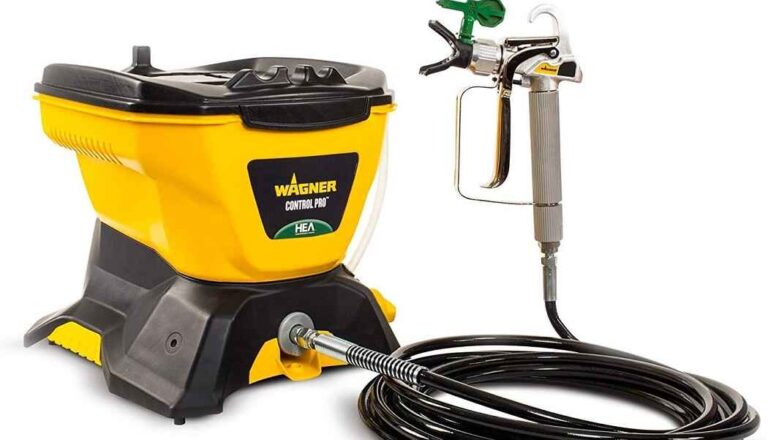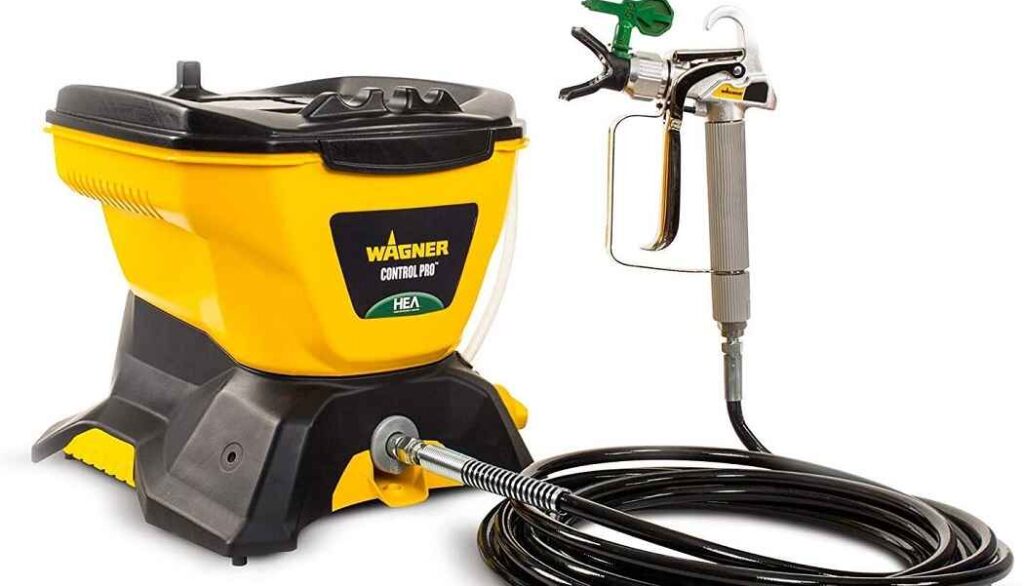
Can You Use Oil Based Paint in Airless Sprayer?
yes, you can use oil-based paint in an airless sprayer, but you must ensure that the sprayer is compatible with oil-based materials, use the correct pressure and nozzle size, strain the paint before loading it, and thoroughly clean the sprayer after use.

Let’s explore the new painting techniques.
Can You Use Oil Based Paint in Airless Sprayer?
Using oil-based paint in an airless sprayer is indeed possible, but it requires certain considerations to ensure a successful and efficient application.
Airless sprayers are designed to handle a wide range of paint types, including both oil-based and water-based paints. When using oil-based paint in an airless sprayer, it’s crucial to check the sprayer’s specifications and ensure that it is compatible with oil-based materials.
Since oil-based paints tend to be thicker and more viscous compared to water-based paints, it’s essential to use an airless sprayer with the appropriate pressure rating and nozzle size. A sprayer with higher pressure and a larger nozzle can handle the higher viscosity of oil-based paint, allowing for a smoother spray pattern and reducing the risk of clogs.
Before loading the oil-based paint into the airless sprayer, it’s essential to strain the paint to remove any impurities or lumps that could potentially clog the sprayer’s nozzle or pump. This step helps maintain consistent paint flow and prevents interruptions during the painting process.
Additionally, proper cleaning and maintenance of the airless sprayer after using oil-based paint are crucial. Oil-based paints can leave behind residue that may cause issues in future paint jobs if not thoroughly cleaned. Follow the manufacturer’s instructions for cleaning the sprayer, using appropriate solvents or cleaning agents designed for oil-based paints.
What Kind of Oil-based Paint Do You Use in an Airless Sprayer?
When using an airless sprayer for painting, it is essential to choose the right type of oil-based paint to ensure optimal performance and a smooth finish. Airless sprayers are powerful tools that atomize paint without the need for compressed air, making them suitable for a wide range of painting projects, including large surfaces, exteriors, and high-viscosity coatings.
When selecting oil-based paint for an airless sprayer, consider the following factors:
Viscosity: Oil-based paints tend to be thicker and more viscous than water-based paints. To use them in an airless sprayer, it’s crucial to check the paint’s viscosity and ensure that it is compatible with your sprayer’s specifications. Some airless sprayers can handle higher-viscosity paints, while others may require thinning.
Thinning: If your oil-based paint is too thick for your airless sprayer, you may need to thin it. However, it’s essential to follow the manufacturer’s recommendations regarding the appropriate thinning ratio. Avoid over-thinning, as it can negatively impact the paint’s coverage and finish.
Paint Compatibility: Not all oil-based paints are suitable for airless sprayers. Some paints contain additives or pigments that can clog or damage the sprayer’s components. Always check the paint can label for guidance on whether it can be used with airless sprayers.
Priming: Some oil-based paints may require priming before being used in an airless sprayer. Check this before purchasing. Priming can help prevent potential clogs and ensure the paint adheres properly to the surface.
Can You Use Oil-Based Paint in Wagner Sprayer?
Yes, you can use oil-based paint in certain Wagner sprayer models, such as the Wagner FLEXiO HVLP Paint Sprayers.
These sprayers are designed to handle both water-based and oil-based paints without the need for thinning. The ability to spray unthinned latex or oil-based paint makes FLEXiO HVLP Paint Sprayers a popular choice for both home and professional use, as it offers more convenience and efficiency in painting projects.
But, Wagner produces a range of paint sprayers that are designed to handle both water-based and oil-based paints. So, it’s crucial to verify the compatibility of your specific Wagner sprayer model with oil-based paint by checking the user manual or contacting Wagner’s customer support. Different Wagner sprayer models may have varying capabilities, and some might not be optimized for oil-based paints.
To ensure safe and efficient use of your Wagner sprayer with oil-based paint, always follow the manufacturer’s recommendations and guidelines provided in the user manual. Using the correct type of paint for your sprayer will help avoid clogs, uneven spraying, or damage to the equipment, leading to better results and longer-lasting performance.
Can You Use Oil Based Paint in Graco Sprayer?
Yes, you can use oil-based paint in a Graco sprayer, specifically in the Graco Magnum Project Painter Plus. The owner’s manual specifically indicates that Graco sprayers are suitable for both water-based and oil-based materials. This means you can confidently use oil-based paints with the sprayer without any issues.
However, it is essential to follow the manufacturer’s guidelines and recommendations for proper usage and maintenance. Ensure you clean the sprayer thoroughly after each use, especially when switching between different types of paints, to avoid any potential clogs or performance problems. By adhering to the instructions provided in the manual, you can achieve excellent results with oil-based paints using your Graco sprayer.
How Do You Thin Oil-Based Paint for an Airless Sprayer?
To thin oil-based paint for an airless sprayer-
- Start by checking the manufacturer’s recommendations for both the paint and the sprayer, as some products may not require thinning.
- Next, choose the appropriate solvent, typically mineral spirits or paint thinner, as directed on the paint can.
- Gradually add small amounts of the chosen solvent to the paint while stirring continuously to ensure even distribution.
- Mix thoroughly until you achieve the desired consistency for spraying, aiming for a smooth and even flow without drips or splatters.
- Once the paint is properly thinned, perform a test spray on a scrap surface to ensure the sprayer is working correctly and the paint is delivering the desired results.
- Always remember to wear proper safety gear, work in a well-ventilated area, and dispose of any waste materials responsibly.
Final Words
Ultimately, the decision to use oil-based paint in an airless sprayer should be based on a careful evaluation of the specific project requirements, the sprayer’s capabilities, and the user’s expertise.
When used correctly, an airless sprayer can provide efficient and impressive results with oil-based paint. However, it is vital to stay informed and take the necessary precautions to ensure a successful and hassle-free painting experience.
